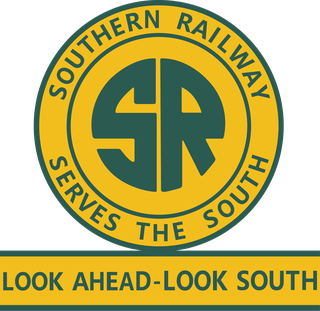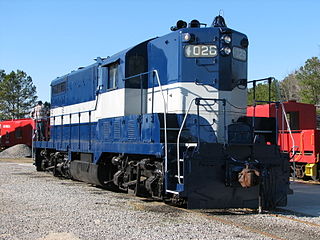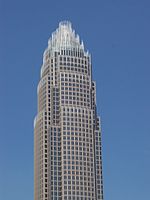History


The bank began in Georgia with the merger of the Citizens Bank of Savannah (established November 2, 1887) and its crosstown rival, the Southern Bank of Georgia in 1906. [3] Mills B. Lane had begun at Citizens Bank as a vice president and director in 1891. In 1901, Lane became president of Citizens Bank. In 1906, Lane and his associates purchased Southern Bank of Georgia enabling them to merge the two banks as the new C&S Bank. [4] The newly merged banks were officially named the Citizens and Southern Bank of Georgia.
In 1922 Citizens and Southern absorbed Central Bank and Trust Corp., the bank founded by Coca-Cola co-founder Asa Griggs Candler. [5]
In preparation to open offices in South Carolina, Citizens and Southern Bank received its charter from the Comptroller of the Currency on May 2, 1927. The "place where its operations ... are to be carried on," is described in that charter as the "City of Savannah, in the County of Chatham and State of Georgia." [6] Mills Lane Jr. and Hugh C. Lane were important figures in the growth and success of C&S. Mills Lane Jr., serving as president, vice chairman and chairman between 1946 and 1973, made C&S the South's largest bank as well as the most profitable of the 50 largest U.S. banks. [7] Hugh C. Lane was elected chairman of C&S in 1960. [4]
In South Carolina, parties associated with C&S of Georgia purchased all the stock of Charleston-based Atlantic Savings Bank and Atlantic National Bank. Atlantic Savings Bank, renamed in 1918, opened October 1, 1874, as the Germania Savings Bank. In May 1928, the names of the two Atlantic banks were changed to Citizens and Southern Bank of South Carolina, although the bank was operating only in Charleston with two locations on King Street and was owned by C&S of Georgia. [8]
Split, growth, and reunification
Quick growth ensued in both South Carolina and Georgia. In 1940, preparing for new federal rules that prohibited banks from operating in multiple states, C&S of South Carolina became a separate corporate entity from C&S of Georgia, allowing South Carolina to have a large "local" bank. In 1956, C&S of South Carolina merged with Growers Bank and Trust in Inman, South Carolina [3] [4] In 1960, C&S of South Carolina installed computers which improved efficiency allowing accountholders with $100 minimum balance per month to have free checking, a first in South Carolina. [4]
In 1985, the Citizens and Southern Georgia Corporation agreed to acquire Citizens and Southern National Bank of South Carolina for $400m or $55/share, reuniting (in 1986) the two banks which had been separated in 1940. At the time the two C&S banks reunited, C&S of South Carolina had assets of $2.5 billion while C&S of Georgia's assets were $12.3 billion. [9]
C&S of Georgia also acquired Landmark Banks of Florida in 1985. The Landmark Bank became The Citizens & Southern National Bank of Florida. C&S of Georgia doubled its size in eighteen months as a result of the acquisition of Landmark Banks and C&S of South Carolina. [3]
C&S had several affiliated companies including the C&S Corporation, the C&S Realty Corporation, the C&S Computer Services Corporation, and the C&S Housing Corporation.
"Distressed" due to mergers
From 1984–1986, the Southeastern Regional Banking Compact allowed Southern banks with primarily Southern deposits to acquire or be acquired by each other while keeping the feared New York, Chicago, and West Coast banks out. [10] This led several of the stronger Southern banks to begin buying regional competitors in order to make them too rich to be taken over.
Sovran Bank, soon to be purchased by C&S, acquired D.C. National Bancorp in 1986, then Commerce Union Bank in 1987. [3]
Mergers
Sovran Financial Corp.
In 1988, C&S initiated merger talks with First Federal Savings Bank in Brunswick Ga. However, First Federal rejected the deal claiming C&S's offer was insufficient and C&S ended the talks. Later, First Federal unsuccessfully sued C&S/Sovran to block NCNB's merger with C&S/Sovran. [11]
Shortly afterward, NCNB, which had grown from a one-state bank into a regional powerhouse, announced plans for a hostile takeover of C&S, and started buying up large blocks of C&S stock. Partly to fend off further takeover attempts, C&S acquired Sovran Financial Corporation of Norfolk, Virginia. The merged company took the name C&S/Sovran, with dual headquarters in Atlanta and Norfolk. The merger created a $47 billion bank with branches in Florida, Georgia, South Carolina, Virginia, Tennessee, Kentucky and the District of Columbia. It appeared to be an enormous Southern super-regional bank rich enough to resist takeover attempts by other banks. [3]
NationsBank
The hasty merger of C&S and Sovran Financial was intended to create a strong, dominant regional bank. However, two problems soon emerged that made C&S/Sovran a takeover target. First was infighting between executives of the two newly combined banks with an Atlanta faction (C&S) and a Virginia faction (Sovran). Second, Sovran had a portfolio of problem loans which weakened the newly merged banks. [12]
NCNB, which had been busy expanding by taking over distressed banks like Texas' First Republic Bank Corporation, [13] quickly recognized that C&S/Sovran was also "distressed". The NCNB purchase of First Republic almost doubled NCNB's assets [14] which helped it to acquire the weakened C&S/Sovran in 1991. C&S/Sovran had $49 billion in assets compared to NCNB's $69 billion in assets upon merger. The merged company took the name NationsBank, headquartered in NCNB's old hometown of Charlotte. [15]
Before the NCNB/C&S/Sovran merger, NCNB was ranked 10th in the US in terms of assets while C&S/Sovran was ranked 12th. Following the merger, NationsBank was ranked 3rd. [3]
C&S/Sovran merged into NCNB as a stock swap transaction and was valued at $4.259 billion. NCNB issued .84 of its shares for each C&S/Sovran shares. Based on NCNB's closing stock price of $37 on July 19, 1991, the last full trading day prior to the announcement, each share of C&S/Sovran was valued at $31.08. [16]
As part of the merger, some C&S branches were sold to other banks. The Moncks Corner (SC) C&S was sold to First National Bank, C&S in Marion, Barnwell, Chester, St. George, Darlington, and Williston, SC, were sold to First Citizens Bank. NCNB of South Carolina also sold some branches to other South Carolina banks. NCNB's Hilton Head, SC, branch went to First Union of NC. [17]
NationsBank continued to expand, eventually buying BankAmerica Corp. which had previously merged with Security Pacific National Bank of Los Angeles, another large California bank. [18] Although NationsBank was the surviving company, it adopted the better-known Bank of America marque, replacing the old BankAmerica eagle logo with a new stylized logo based on the U.S. flag. [19]







